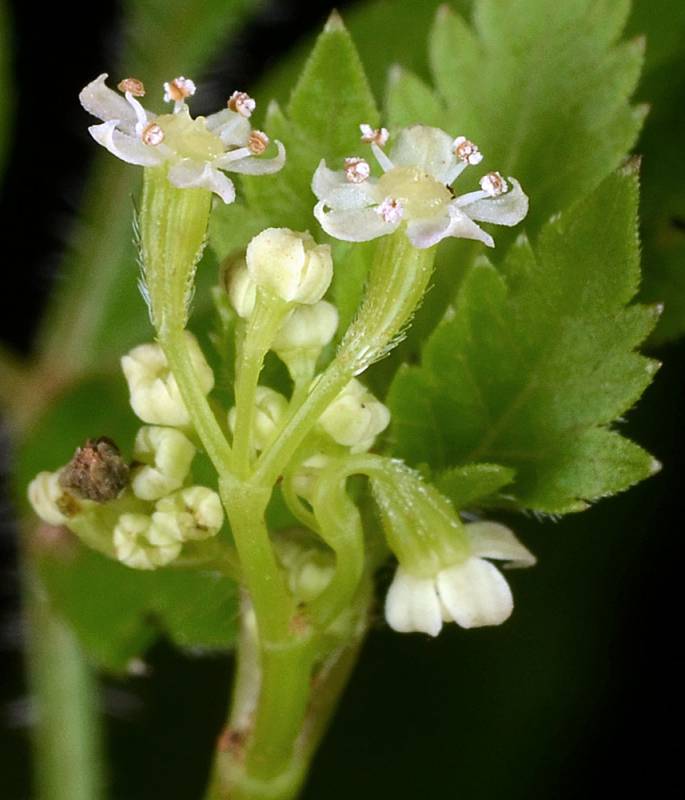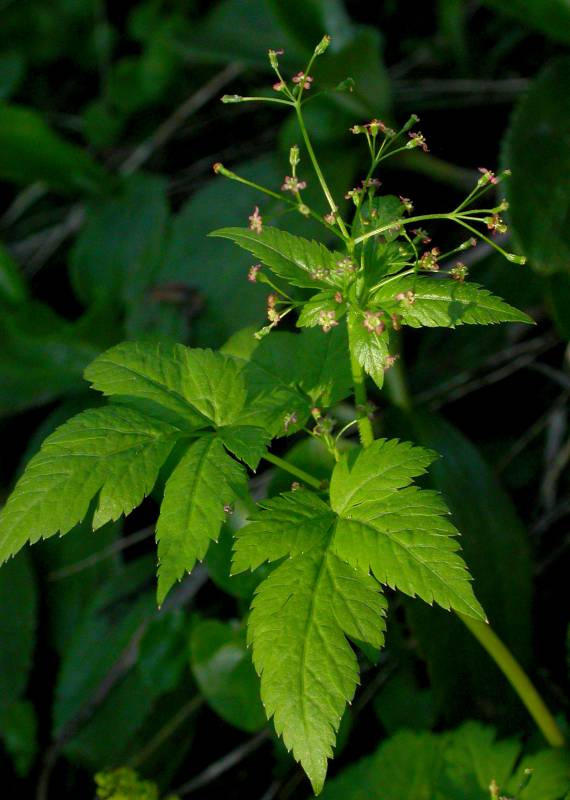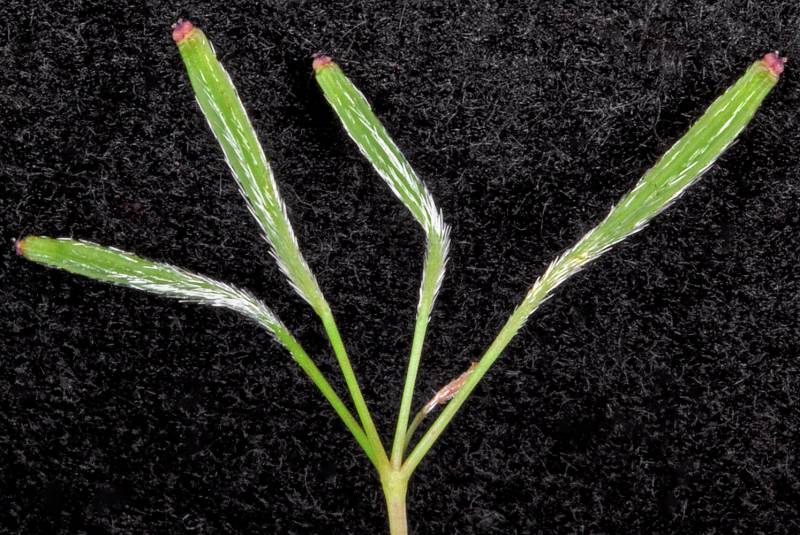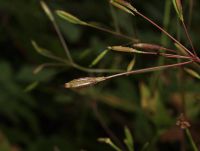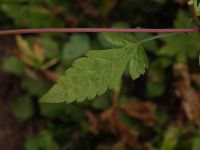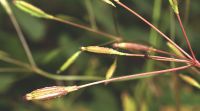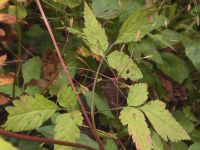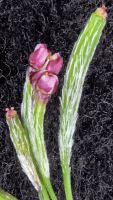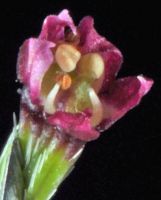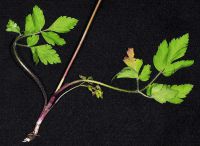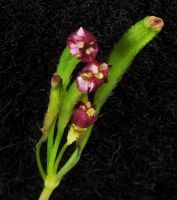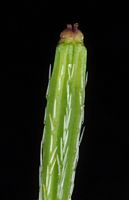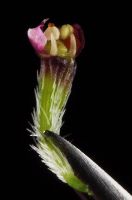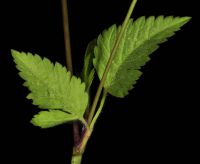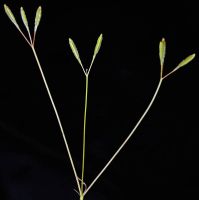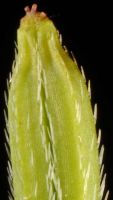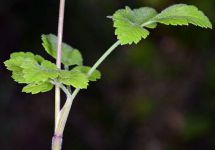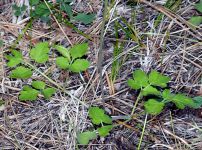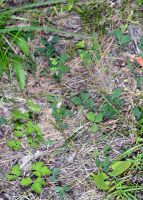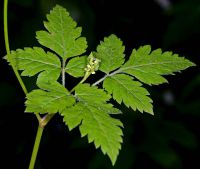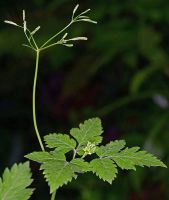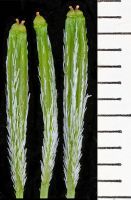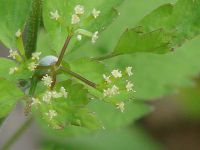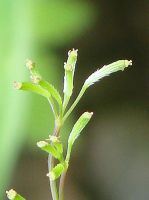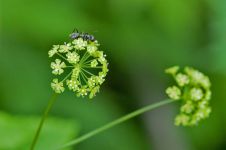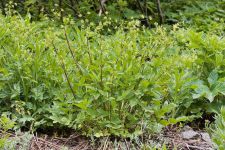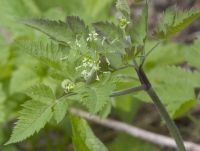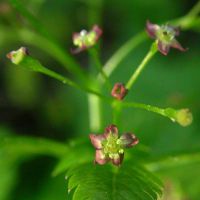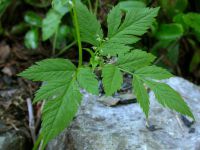Distribution: Occurring on both sides of the Cascades crest in Washington; Alaska to California, east to Alberta, Idaho, and Montana.
Habitat: Moist forest openings, understory, and edge from low to middle elevations in the mountains.
Flowers: June-July
Origin: Native
Growth Duration: Perennial
Conservation Status: Not of concern
Pollination: Generalist
Somewhat short-hairy perennial from a well-developed taproot, the 1-3 stems 3-10 dm. tall.
Leaf blades biternate, the leaflets thin, narrow to broadly ovate, coarsely toothed to incised, 2-7 cm. long and 1-5.5 cm. wide; basal leaves several, long-petiolate; cauline leaves 1-3, sub-sessile; stem branched above and producing several small umbels.
Inflorescence of loose, compound umbels, the long peduncles rising from leaf axils as well as terminal, the peduncles 5-25 cm. long; the 3-5 rays ascending-spreading, 2-12 cm. long; involucre and involucel wanting; calyx teeth obsolete; flowers usually purplish or pinkish, sometimes greenish-white.
Fruit linear-oblong, 8-13 mm. long, densely covered with ascending hairs at least toward the base; stylopodium depressed, broader than high.
Publication: Allg. Bot. Z. Syst. 12: 5. 1906.
Osmorhiza leibergii (J.M. Coult. & Rose) Blank.
Washingtonia leibergii
Washingtonia purpurea J.M. Coult. & Rose
PNW Herbaria: Specimen records of Osmorhiza purpurea in the Consortium of Pacific Northwest Herbaria database
WA Flora Checklist: Osmorhiza purpurea checklist entry
OregonFlora: Osmorhiza purpurea information
E-Flora BC: Osmorhiza purpurea atlas page
CalPhotos: Osmorhiza purpurea photos

